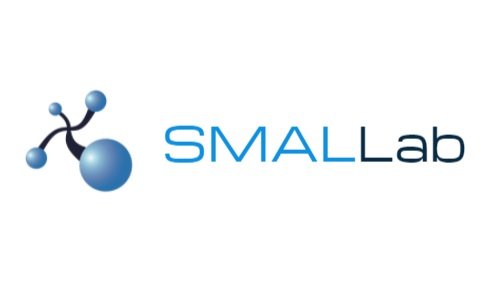Dr. Felicia Barnett and Brandie Wright, Crittenden Middle School
Background
Crittenden Middle School is a STEM school in Newport News Public Schools (NNPS), a district in the Hampton Roads, VA, Metropolitan Area with more than 30,000 students and 2,100 teachers. SMALLab Founder and CEO, Dr. David Birchfield, sat down with Dr. Felicia Barnett, Principal of Crittenden Middle School, as well as Brandie Wright, Applied Technology Coordinator for NNPS, to discuss how technology—including SMALLab—creates better student engagement and enhances student outcomes compared to classroom-only instruction.
Challenge
Located in a high-poverty region, 100% of students at Crittenden Middle School receive free or reduced-price lunches. “Despite our disadvantages,” says Dr. Barnett, “We still need to prepare students for life, for college, and for careers. That’s why it’s essential that we provide experiences to students that they might not be able to get on vacation or at a summer camp due to cost. That’s where technology comes in.”
“Despite our disadvantages, we still need to prepare students for life, for college, and for their careers. That’s where technology comes in. — Dr. Felicia Barnett”
However, the traditional classroom often falls short in providing the engaged learning environment that’s so important to Dr. Barnett’s vision.
Brandie Wright adds, “Students want to move around. It’s difficult for them to sit still. So why ask them to? Why expect them to? Instead of asking students to adapt to a learning environment that’s better suited for adult learners, what if we could adapt the learning environment to what will best work for middle schoolers? This is the reason—one of many—that attracted us to the SMALLab.”
Solution
To complement the classroom learning environment, Crittenden Middle School installed a SMALLab, a classroom-sized, mixed-reality technology that makes the learning environment interactive and tactile.
The SMALLab enables Barnett and Wright to completely transform the teaching dynamic from one focused on facts and memorization to one that emphasizes understanding and relevance to things students see in the world around them.
For example, one class read Fever, a work of historical fiction detailing the spread of bubonic plague in Europe. Students then used the SMALLab to do a sequencing activity dealing with the order of events that took place in the novel and, subsequently, students did a Virtual Reality activity that took them into Africa to witness first-hand what the spread of Ebola looked like during the 2014-2016 outbreak.
Dr. Barnett noted the following observations, “In the SMALLab, we saw students become more social. We saw them work better in teams. We saw them get so involved in the activities that they stopped looking at the clock. When the activity finally ended, they couldn’t believe how quickly the time had passed.”
“The teachers were talking less but getting far more out of the students in terms of outcomes. — Brandie Wright”
Wright adds, “The SMALLab was equally transformative for teachers as it was for students. The teachers were talking less but getting far more out of the students in terms of outcomes.”
Result
To Dr. Barnett, student engagement has a direct relationship with student attendance, and Crittenden Middle School has the second-highest attendance rate of NNPS’ eight (8) middle schools. She also notes a change in student behaviors. “Eighty percent of our disciplinary referrals come from the classroom. We haven’t had a single one from the SMALLab. That speaks volumes.”
High attendance and low disciplinary referrals also drive improved student outcomes, and Wright is quick to point out that the SMALLab enables teachers to cover more content, more effectively, and at a more appropriate pace than the traditional classroom allows. “It’s more efficient for [teachers] because they’re spending less time making copies and writing on a whiteboard. Teachers can spend more time working with the students and diving deep into a particular subject. The SMALLab doesn’t just make better students. It makes better teachers.”
“The SMALLab doesn’t just make better students. It makes better teachers. — Brandie Wright”
At the end of the day, my dream is for students to come to school and to be excited to see what’s going to happen in the classroom,” concludes Dr. Barnett. “The SMALLab is getting us closer to realizing that dream.”
About SMALLab
SMALLab (Student Multimedia Accelerated Learning Lab) Learning is a classroom-sized, transformational 3D learning environment in which multiple empirical research studies have measured 86% increases in student learning and 6.7X increases in student collaboration.
SMALLab Learning began as a research project at Arizona State University, focused on how to combine the latest research into how students learn with the latest technology interfaces to create a system that dramatically improved learning. SMALLab Learning accomplished this by implementing technology in a way that makes it “invisible” to the student, while providing uniquely engineered game- and inquiry-based collaborative learning software modules that encourage students to work together to succeed.
Educators have described SMALLab Learning as the “Star Trek Holodeck V1.0,” “Virtual Reality inside out,” and “the coolest classroom” they have ever seen. Research and development was funded by grants from the National Science Foundation, the Bill and Melinda Gates Foundation, the MacArthur Foundation and the Intel Corporation.

